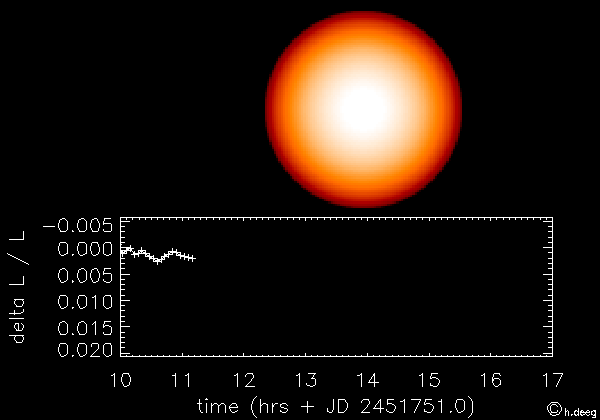
| ||||||||
| COROT | COROT APWG | COROT AO |
| The COROT mission is primarily devoted to understand the physical processes that determine the internal structures of stars and to detect and observe extrasolar planets. |
| Stellar Oscillations | |
|
COROT uses the powerful new technique of asteroseismology by measuring the frequencies, surface amplitudes and line widths of stellar oscillations. These oscillations are acoustic and gravity waves that penetrate deep inside the interior of stars. The properties of these waves are determined by the medium through which they propagate; knowledge of the frequencies, amplitudes and line shapes gives access to the physical properties of the inside of stars and allows to probe their internal structure. The primary observational technique is to measure the small amplitude oscillations of a wide range of stars of different masses, spectral types and in different stages of evolution, by very high precision photometry. COROT uses the tranquillity of space to enable measurements to be made to the unprecedented precision needed to yield noise levels in the oscillation amplitudes as low as 2 ppm /Hz-1/2 on stars as faint as mV.= 8 mag. Such a low photometric noise level simply cannot be reached from the ground with any present or foreseeable future instruments due to the fundamental limitations imposed by atmospheric scintillation and transparency fluctuations. Since stars are optically thick classical techniques only give knowledge on their exterior layers and global properties. Asteroseismology thus is a major new and unique diagnostic tool with which to probe the internal structure of stars, yielding information which cannot be obtained by any other means. |
 Model of stellar oscillations |
| Exoplanets | |
 Planet transit |
It was 1995 when Peg 91b - the first extrasolar planet - was discovered. Since then over 200 more are known. COROT will exceed this number by a multiple. When a planet transits its star it is decreasing the stellar light. Due to the shape, the duration and the amount of this light variation it is possible to obtain information of the structure and mass of the planet as well as orbital parameters (distance, inclination). COROT is observing a stellar field for 150 days and is exploring over 12.000 stars for earth-like planet transits. The luminosity of stars observed by COROT in the exoplanet-mode range from mV=12 mag to mV=15 mag. |